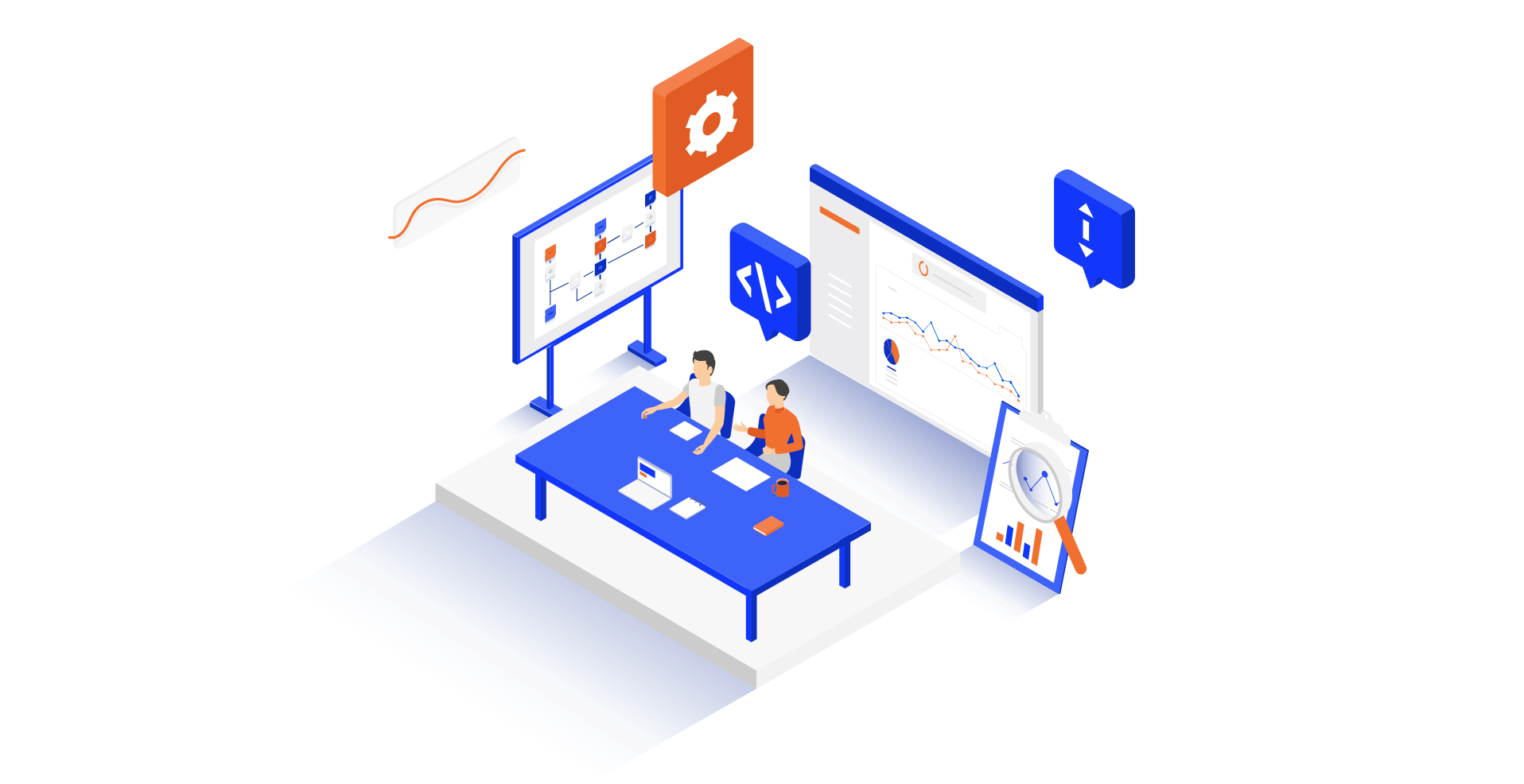There are several good practices that the development team should adopt to provide you with a precise estimation. The more details are included, the better, as it determines the success of your final project. So, what should a software house proposal look like?
A decent proposal should contain a number of details, such as project management methodology, roles, budget, technology, timeline and more. Here is the key information that you can find in a software house proposal.
Methodology
It is important to include a methodology for establishing software process development in the proposal. You know how the team works and what the process is going to look like, so it helps you decide whether it’s something that is in line with your vision.
The goal is to create a friendly work environment that makes the process as effective and smooth as possible.
Roles in the project
Before the final proposal and estimation are created, it’s crucial to decide who of the specialists need to be involved in software development. Then, a software house should estimate the effort required to complete the project.
So, you will know exactly which of the team members are dedicated full-time, and which of them are needed only for specified tasks. For instance, when it’s a project focused mostly on the backend, it may require two backend developers (full-time) and a frontend developer (full-time) to avoid a content switching problem, as well as a part-time QA specialist and a project manager (task-related).
Technology stack
You should also know the details about technical requirements and specific technologies that will be used in project implementation, as well as the technology responsible for the communication between the client- and the server-side. Plus, details on what frameworks will be used or whether the application will be hosted on-premise or in a cloud-based environment.
Deciding on the tech stack determines the logic behind how your application will work, so this part can’t be missed.
Functionalities
Another item that should be included in a software proposal is a list of system requirements and functionalities detailed in terms of effort.
Features need to be broken down into smaller bits to identify all use cases and see how much time is needed to build each function. It’s also needed to determine the links between functional requirements and system, including maintenance and support. A single function may come with numerous subfunctions, so building all the features may take much longer than you thought.
Of course, the more work required to build a single feature, the more expensive the project becomes. There are several other factors that affect the final price, so we put a strong focus on the real cost behind your project.
Thus, we know how many man-hours a certain function requires (including developers, QA engineer, and project manager time).
Also read: IT Project Cost Estimation – an Overview Of How to Do It Right
Projected costs
Speaking of costs, you need to remember that software development is not only driven by technology costs, but also by time and people. This is why you need to know the hourly rate per role.
The final budget is calculated based on man-hours, but you need to understand the dependencies for resources needed. The value of man-hour can differ depending on experience level and the role of the IT specialist.
Think of it this way: a junior developer needs more time to figure out how to implement a solution while a senior specialist can build the function faster.
Estimation details
Moreover, the estimation should consist of the list of all the things that affect the final price. These could be time allocated to QA, team meetings, setting up new environments, nonfunctional requirements, and more.
The last items that are equally important are all the constraints, comments, and assumptions that we followed when we prepared an estimation. Keep in mind that we need to perceive every function by identifying all possible use cases, which also matters for the final estimation.
For instance, if you need a web application that supports various languages, but you want to start with a single language version, there’s more work to be done. This is because we need to prepare the infrastructure that makes it ready for future modification (when you decide to provide more languages), so it equals extra time on our end.
Extra questions
Even though we ask detailed questions during a discovery call, the number of questions grows in line with the project complexity. So, a software house may need to ask some more questions to collect missing information. Be ready to provide more details — it’s important to get a precise estimation.
Software house proposal — what’s next?
Last but not least, you should get a summary of all variables important for the project along with further steps. You can expect a meeting in order to discuss a software house proposal, as you need to understand how software development cost is calculated.
You can always discuss the proposal in detail. Keep in mind that it’s a custom estimation, so if you feel that the budget is exceeded and need more information about the price, we’ll get directly into every element to address all your doubts. We’re open to discuss the functionalities, suggest possible modifications and change the project’s scope.
Looking for a reliable software house for your next project? Contact us at contact@blurify.com and get a free quote!



